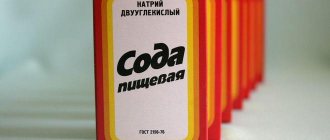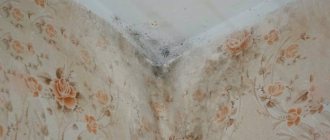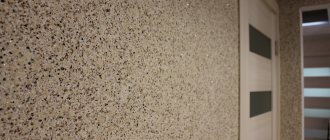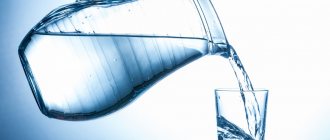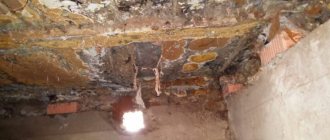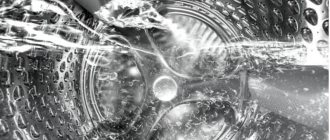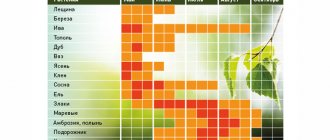Issues discussed in the material:
- What are the reasons for the formation of white sediment in water during boiling?
- How white sediment in water affects the human body
- How harmful is white sediment in water for household appliances?
- How to improve the quality of water from a well that produces white sediment
- How to Get Rid of White Sediment in Well Water
In most cases, white sediment in water occurs due to a high concentration of salts of various chemical elements, including iron, magnesium, calcium, otherwise called hardness salts. Increased water hardness is indicated by the presence of scale and sediment in water heating appliances (kettles, washing machines and dishwashers), a film on the surface of tea or coffee, and white flakes at the bottom of the container. Using such a liquid for drinking or for household purposes is inconvenient and is fraught with a number of negative consequences, both for household appliances and for human health.
Why does a white precipitate form when water boils?
The formation of scale - a white precipitate when water boils - is promoted by a high concentration of salts of chemical elements such as calcium and magnesium. They enter the water as it passes through various layers of soil. A large amount of salts in the ground makes the water hard, a small amount makes the water soft.
In addition, water may, depending on the salts it contains, have permanent or temporary hardness. In the second case, we are talking about the content of water-soluble substances in the liquid. When heated (in a kettle, washing machine or dishwasher), they disintegrate, resulting in a white precipitate in the water. It is clearly visible, and after some time, if not removed, it can cause damage to household appliances.
If the liquid contains insoluble salts, then they speak of constant hardness. Such substances pose an increased danger not only to household appliances, but also to human health. Since they do not evaporate during the boiling process, they settle on the heating elements of electrical appliances, as well as on the surface of the skin and internal organs of a person, causing various diseases.
Chemistry as a science understands the hardness of water as the physical processes occurring in it associated with the presence in the liquid of salts of alkaline earth metals, mostly calcium and magnesium. Aluminum and ferric iron (Fe3+) also affect the change in hardness. However, due to the acid-base balance of natural water, these elements cannot have a significant effect on its condition. In this regard, barium (Ba2+) is not taken into account, the content of which in the liquid has little effect on its quality.
The hardness index primarily determines whether water can be used for domestic and industrial purposes. And it is this quality that affects the appearance of white sediment in water after boiling.
The hardness indicator is determined by the number of millimoles of calcium and magnesium ions contained in a liter of water (mmol/l). One mmol/l is the ratio of the molecular weight of a substance, expressed in mg/l, to its valence. One mmol/l indicates that a liter of liquid contains 20.04 mg/l calcium or 12.10 mg/l magnesium. For simplicity, the unit of measurement used is mEq/L, equal to mol/m3. In addition, to measure water hardness in foreign countries, German degrees (dH), French degrees (TH), and American degrees (ppm) are used.
Recommended articles on this topic:
- Where to complain if the water quality is poor
- Which water is better to drink: choose the healthiest one
- How to purify water from harmful substances: the most popular methods
Let's tell you a little more about the types of water hardness:
- Temporary, otherwise called carbonate, hardness depends on the content in water (at acidity levels above 8.3) of calcium and magnesium bicarbonates - Ca (HCO3)2, Mg (HCO3)2. When such water is heated, unstable bicarbonates take an insoluble form, forming carbonates CaCO3↓ and MgCO3↓. At the same time, carbonic acid is released and a white precipitate appears in boiled water, which is also called scale or boiler stone. Since thermal treatment of water makes it possible to almost completely remove hardness salts from it, its type itself is called temporary.
- Constant, or non-carbonate hardness, depends on the presence of sulfate, nitrate, and chloride anions in the water. Their calcium and magnesium salts (CaCl2, CaSO4, MgCl2, MgSO4) are not removed during the boiling process.
- Total , which refers to the total amount of magnesium and calcium salts present in the liquid (that is, both carbonate and non-carbonate hardness together).
Depending on the amount of magnesium and calcium salts, water can be:
- soft, in this case its hardness is less than 3 mEq/l;
- medium hardness, with salt content in the range of 3–6 mEq/l;
- hard when the salt concentration exceeds 6 mEq/ml.
The process of boiling water includes three stages:
- Air bubbles begin to form on the bottom and walls of the kettle, gradually rising to the surface of the water.
- The number of bubbles increases sharply, they quickly rise to the surface. At this stage, the liquid may become cloudy and white.
- Intense boiling of water, accompanied by the bursting of large bubbles, splashing of water and the formation of steam.
The second stage of boiling takes the shortest period of time, and because of the characteristic color of the water it is called the “white spring”. Turbidity and whitening of water is associated with its purification from hardness salts. Boiling ends with the precipitation of salts and softening of the water. However, only those substances that impart temporary hardness to the liquid are evaporated. Calcium bicarbonate during heat treatment is converted into calcium carbonate and water with carbon dioxide. And due to insoluble calcium carbonate, turbidity and white sediment appear in the water.
White sediment in water after boiling can appear in different ways, taking different forms. Most often you can find:
- film on the surface of the liquid;
- flaky sediment at the bottom;
- lime deposits on the walls of dishes and household appliances.
The reason for the formation of these types of sediment is hardness salts. The presence of flocculent sediment may also be associated with an increased concentration of iron salts. However, it appears as a result of settling, and not after boiling. If there is dirt in the water, then during the boiling process dirty foam appears on the surface. That is, the formation of a white precipitate in water after heat treatment can also be caused by mechanical impurities. In addition, sediment, both foamy (initially) and flaky at the bottom (after the water cools), may appear due to the use of dirty salt.
It is better not to use such water, even for purely domestic purposes. If you simply wash the floors with it, there is a high probability of stains appearing, which can only be removed by washing the floor again. A white precipitate when boiling tap water can form due to an increased concentration of aluminum and iron salts, but only if the level of acid-base balance of the liquid does not exceed the natural one.
How to remove white deposits from glass containers after boiling without compromising sterility
If you want to sterilize jars by boiling, then sediment will appear to one degree or another in any water other than distilled water. These are salts, it’s difficult to get rid of them completely, and if you forget the jars a little, then there will be a small deposit based on the level at which the water filled the jar. This is actually scale or limescale. In principle, you can try adding a little citric acid to the water. But in my opinion, it is easier to sterilize the jars with steam over a saucepan on a special grid with holes, where the jars are lowered with their necks down.
We recommend reading: Documents for Registration of a New Charter of a State Institution with the Tax Office
Try filtering the water first and then boiling it. It is better to use filters for hard water - if I’m not mistaken, there is carbon there, passing through which, salts and rust settle and no longer get into the water. The main thing is to choose the right filter.
How harmful is white sediment in water?
You may also be interested in: Drinking water chemistry: how to determine and improve
It is no secret that the use of hard water negatively affects human health. We list some of the possible consequences of its use:
- Due to increased water hardness, the likelihood of urinary stone growth and the occurrence of urolithiasis increases. This occurs due to the accumulation of salts that do not have time to be eliminated from the body.
- Hard water used for washing dries out the skin . The reason is the so-called “soap slag”, which appears due to the fact that soap does not lather and does not dissolve well in such a liquid. They close the pores, preventing normal skin breathing, which can lead to itching and burning, as well as various types of skin inflammation.
- When washing your hair with hard water, a thin film forms on the surface of the hair, destroying the natural fat layer. Since soap waste is not washed off, as it accumulates, it begins to cause itchy scalp , dandruff, or hair loss.
- Hard water also poses a risk to animal health. They, like people, can develop urolithiasis. This water is especially dangerous for pets that eat dry food. Regular bathing of dogs and cats is fraught with skin and coat problems.
- The cooking process slows down , since numerous salts interfere with the cooking of meat, which in turn negatively affects the absorption of protein and threatens problems with the gastrointestinal tract.
Of significant importance is the property of insoluble salts to accumulate in the body, provoking the formation of kidney stones and clogging of blood vessels. That is, if you use hard water with white sediment for a long time, you will not be able to avoid health problems.
However, the situation is not as simple as it might seem at first glance. The permissible concentration of hardness salts in water may vary depending on the conditions of a particular area. For example, the taste threshold for a calcium ion varies from 2 to 6 mEq/L and depends on the content of the corresponding anion. At the same time, for magnesium this figure can be significantly lower (in some cases, the liquid can have a hardness of up to 10 mEq/l). Water with a high level of hardness has a bitter taste, negatively affects the organs of the digestive tract, and its organoleptic properties cannot be assessed highly.
The white precipitate in water that falls out as a result of boiling indicates that such a liquid has fewer useful qualities compared to soft ones . The latter , on the contrary, has numerous advantages. Among the advantages of its use, both for domestic purposes and for drinking, the following can be noted:
- the consumption of cleaning products is reduced by a third or even half, since soft water promotes the formation of abundant foam when using soap, powders, gels, etc.;
- the use of such water does not lead to the formation of scale, and therefore does not create the risk of breakdowns of washing machines, dishwashers, kettles, etc., plumbing equipment, does not spoil clothes, and therefore reduces costs for their repair and restoration;
- food and drinks prepared using soft water are of higher quality and have a pleasant taste;
- the appearance and condition of hair and skin becomes better;
- the risk of urolithiasis, as well as diseases of other internal organs, is reduced.
Thus, when using soft water, you not only reduce your costs, but also generally improve the quality of your life. Do not forget that it is not only possible, but also necessary to combat hardness salts and white sediment in the water. And the sooner you do this, the better.
Is Water After Boiling With White Plaque Harmful?
As for air bubbles, this phenomenon is observed while the modules are new and will pass over time. The modules consist of carbon carbon blocks and in order for the entire surface of the module to be saturated with water as quickly as possible, the following procedure must be done: open the faucet on the sink so that water flows in a thin stream; you can adjust the stream using the connection unit (under the sink) to the water supply or the tap on the sink . It is necessary to drain for 20-30 minutes in a stream as thick as a match.
“Are hardness salts dangerous”? Dangerous. Spurs in the heels, stones in the kidneys and bile ducts, three-knock joints, after the onset of the 4th stage you will not walk at all, from the word AT ALL, all kinds of chondrosis, i.e. deposits of excess salts on the tips of the vertebrae, which will put pressure on the nerve endings, causing extreme pain. Drink only soft water. Get everything you need from, preferably, natural products. I wish you health and longevity. Best regards, Olga.
Recommended reading: Installation of a Reception Desk at Kosgu Hospital
How does white sediment in water affect the performance of household appliances?
Using hard water with white sediment negatively affects the service life of household appliances:
- A high concentration of hardness salts negatively affects the ability of detergents to foam and wash away dirt. Accordingly, the consumption of powders, gels, soaps and other cleaning products increases significantly.
- In addition to the fact that detergents do not foam well, as a result of contact with hard water, due to the formation of salt deposits, they contribute to the appearance of stains and hard deposits on the surface of plumbing fixtures and on dishes. This plaque is difficult to remove from dishes and over time destroys plumbing equipment.
- As a result of thermal treatment of water, salts not only form a white precipitate, but also crystallize and settle on the heating elements of electrical appliances in the form of scale. And the main reason for the rapid failure of household appliances lies precisely in it.
- Because of hard water, stains, streaks and dirty residue appear on newly washed items, the fabric becomes dull, and designs and prints take on a gray tint. It is very difficult to remove such defects, and you will also need to spend a lot of washing powder or washing gel. After using hard water, fabrics lose their elasticity, becoming rough and hard. This occurs due to salt clogging the space between the fibers. Clothing and linen become less durable.
Hard water with white sediment also negatively affects communications:
- As in household appliances, hardness salts precipitate or crystallize and settle in the form of scale on the inner surface of pipes, as well as on the walls of large appliances and installations. Subsequently, due to the effects of scale, the walls of the pipelines become thinner and then completely destroyed.
- Due to large amounts of white sediment in the water or scale on heating elements, large electrical appliances such as boilers often fail.
- Due to deposits of hardness salts, sediment and scale that accumulate on the walls of water pipes, their permeability deteriorates, and therefore heat transfer decreases. Reduced water pressure entails a decrease in its level in the radiators. There is a threat of blockage of pipelines entering and exiting houses. All this leads to increased energy consumption.
How to improve water quality from a well with white sediment
Many people see the solution to all problems in equipping their own well on a plot of land. The liquid from it can be used for household purposes, as well as for drinking. In addition, it is believed that such water is cleaner and healthier than regular tap water. However, a well or well can present certain surprises, and they will not necessarily be pleasant.
For example, the water may be hard. This means that, in addition to low organoleptic properties, it will pose a danger not only to household appliances, but also to health. If you are faced with the fact that after boiling water from a well, a white sediment remains, then you have probably thought about ways to soften it. Such methods exist and there are quite a lot of them.
You may also be interested in: Poor quality water: what to do if it does not meet standards and how to avoid negative health consequences
However, first it doesn’t hurt to make sure that the water really contains a high concentration of hardness salts. You can talk about the need to soften the liquid if the following signs are present:
- if you are faced with white stains, hardness and roughness of things and clothes after washing;
- note that all detergents do not foam well;
- after settling or boiling water, a white precipitate forms in it;
- you notice that after washing your skin there is a feeling of tightness and dryness;
- the walls and bottom of teapots and pots are covered with white scum;
- white plaque forms on taps, mixers, shower elements, and plumbing fixtures;
- hair becomes brittle and excessively dry.
The listed signs are indirect and subjective. Based only on them, you should not resort to water softening, since its excessive softness can also cause harm.
In order to confirm increased water hardness, you can conduct fairly simple home tests. Firstly, you can use special test strips that change color depending on the degree of water hardness. You can also use a conductometer (also called a salinity meter), which determines the electrical conductivity of water in accordance with the amount of salts dissolved in it.
Well, you can finally make sure of the need to install filters or other cleaning and softening equipment by taking water samples for laboratory testing. Depending on the results obtained, specialists will tell you what equipment is needed in your case. Because, in addition to hardness salts, other harmful elements may be present in the water from your well.
If you install filters or other expensive cleaning equipment just like that, without conducting the appropriate research, then you can throw money down the drain without ever coping with the existing problem.
Softening hard water at home is quite simple. There are a huge number of different methods, starting from the primitive ones that our grandmothers used, and ending with the use of modern equipment. Since the use of different methods will lead to different results, the choice of one or another method of water softening in each case depends on its characteristics.
Thermal processing methods.
The simplest and most accessible way for everyone to deal with white sediment in water is boiling. Due to heat treatment, hardness salts fall out in the form of a precipitate, which is formed as a result of the decomposition of carbonate and sulfate structures. The boiled water must settle, after which it is carefully drained, or additional filters are used to prevent sediment from getting into the drink.
Boiled water is considered soft and safe for health. Due to heat treatment, pathogenic microflora is killed and the water is disinfected. However, the scale that appears during the boiling process has a negative effect on dishes and household appliances. Kettles will need constant cleaning or regular replacement. In addition, boiled water is used exclusively for drinking and cooking. Using it to satisfy other household needs is problematic and costly, since electricity consumption in this case will increase significantly.
Another method of temperature treatment of water that helps soften it is freezing. It is based on the theory that a pure liquid freezes faster than one that contains impurities. Thus, after freezing, unfrozen water remains in the center of the container, which must be drained. After defrosting the remaining ice, you will get a soft, clean, structured, healthy liquid. However, you can freeze water in the same limited quantities as boil it; therefore, it is impossible to use this method to soften liquid for all household needs. In addition, in this way it will not be possible to remove all excess salts from it, therefore, the softening will only be partial.
Supplements
A simple solution to the problem of hardness and white sediment in the water is to add softeners to it. In accordance with the intended purpose of the liquid, they can be different, both natural and chemical.
- Chemical softeners are available in tablets, powders, and liquids. Manufacturers of household chemicals offer a large number of different chemical additives used in the process of washing clothes (Calgon) or washing dishes (Finish) in a washing machine or dishwasher. They significantly reduce the negative impact of hard water on the internal elements of household appliances, preventing the formation of scale and sediment, and therefore extending their service life. If it is quite simple to remove white sediment from the bottom and walls of a kettle or pan, then with machines the situation is more complicated, since scale settles on the internal elements, having a more serious destructive effect. Such products should be used exclusively in accordance with their intended purpose. It is prohibited to soften water for drinking or cooking with their help.
- Natural softeners include lime, soda, and acid. To soften hard well water with white sediment intended for household needs, lime is used. You can improve the properties of drinking liquid using soda. However, this method cannot be called absolutely safe; you should not abuse it. You can soften water by using citric acid and vinegar. But, given that they simultaneously increase the level of acidity, you should not use it for drinking or cooking. But you can and should wash your face with this water. Such additives will have a positive effect on the condition of the hair, giving it softness and shine. Citric acid or vinegar will help clean the scale inside the kettle or washing machine.
- Also, natural remedies for softening hard water with white sediment include herbal decoctions. They can also be added to a bathtub, then, in addition to soft water, you will receive components that have a positive effect on the skin and hair, softening the aggressive effect of detergents. Chamomile flowers, nettles, flaxseed, etc. are suitable for these purposes. Decoctions can also be used for drinking, however, they cannot replace ordinary clean water.
- Natural remedies include silicon and oak bark. The properties of natural silicon that help reduce water hardness have been known for quite some time. The stones must be placed at the bottom of the container, filled with water and left for several days. Then the liquid must be carefully drained, leaving the bottom layer with a white sediment. It is recommended to use oak bark as a natural softener, which, obviously, being an adsorbent, absorbs hardness salts.
If you need to soften the water for watering plants, you can add peat to it and leave it for several days, or just leave it on its own. Using the listed means, you can soften the water to one degree or another, but the result will not be one hundred percent. In addition, none of them will help make water suitable for both drinking and household needs.
Filters.
However, you can get rid of hardness and white sediment in water using filters that have virtually no disadvantages:
- ion exchange;
- membrane;
- reverse osmosis;
- magnetic;
- electromagnetic.
You may also be interested in: Interesting facts about water: the most unusual and mysterious
In addition to softening water, they improve its quality by removing harmful impurities. If the concentration of hardness salts is not too high, then ordinary filter jugs with replaceable cartridges will help to cope with it. Despite their small volume, they are able to satisfy the drinking and nutritional needs of the family. If we talk about softening water for household needs, then you will need to install more complex equipment on the well itself.
If you notice that a white sediment remains in the water even after using the filter, there may be several reasons:
- The use of a filter that removes mechanical impurities (rust, broken-off limescale from pipes), but cannot cope with chemical compounds (chlorine, salts). They remain in the water, falling out as a white precipitate after boiling.
- Using an old filter that has expired. The problem is solved by buying a new one.
- Using a low quality filter. To solve the problem, you need to choose another option.
Softeners.
You can effectively get rid of white sediment when boiling water using a cationic softener.
The operation of the device is based on natural processes. The cartridge containing sodium comes into contact with contaminated water. The structure of the resin attracts salts, replacing them with sodium, which, on the contrary, enters the water, softening it and imparting beneficial properties. No additional actions are required for the reaction to occur; cleaning occurs naturally.
It is worth keeping in mind that using the device is not very convenient and economically unprofitable for ordinary consumers. Due to the rapid washing out of cartridges, they need to be replaced frequently. Among the disadvantages of the device are small volumes of water, the need to frequently change cartridges and their high cost. In the absence of alternative options, this method was widely used. At the same time, the device took up a lot of space, and the cartridges clogged too quickly.
If we are talking about cleaning and softening hard, dirty water, then you can use two softening devices that can cope with white sediment in the water and scale. One of them is electromagnetic, suitable for removing hardness salts from water for domestic needs. The second - ion exchange will soften drinking water. In this case, it will not be possible to get by with just one device.
How to deal with white sediment in well water
The problem with hardness and white sediment in the water will be solved almost by itself if you have the opportunity to install a purification system with an aeration column, ion-exchange resins, etc. However, in the absence of such equipment, you should not fall into despair.
In order to get rid of hardness and white sediment in water, use the following algorithm:
- Check the condition of the waterproofing of the seams between the rings and the pipe insertion into the well.
- Form a waterproofing layer on the top rings.
- Forcefully dry the inside of the rings, remove deposits of sludge and other microorganisms.
- Clean and build a bottom sand and crushed stone filter.
- Create a shungite bottom filter layer.
- Disinfect the well walls with a chlorine-containing agent, for example, “Belizna” (you need to take half a liter of the product per bucket of water).
- Disinfect well water using a product containing chlorine.
- Aerate the water in the well.
- Select a suitable quality well cover.
How to 100% get rid of white sediment in water
You can get rid of hard salts and white sediment in drinking water by resorting to one of the following effective methods.
Reverse osmosis. The essence of this method of water purification is its passage through semi-permeable membranes (in most cases, polyamide). In addition to hardness salts, most other impurities and contaminants are removed from the water. The processing efficiency is approximately 99.9%. This technology is most often used in household systems for drinking liquids. The disadvantage is the need for advance preparation of water supplied to the reverse osmosis membrane.
Electrodialysis. You can get rid of salts that give a white precipitate after boiling water by applying an electric field. Special membranes are used to remove dissolved impurities. In addition to hardness ions, in this case, as when using reverse osmosis systems, the liquid is cleaned of other contaminants.
Ion exchange. The method consists of using an ion-exchange granular charge (usually ion-exchange resins play its role). As a result of contact with water, hardness salt cations (calcium, magnesium) are replaced by sodium or hydrogen ions. This processing method is called Na+ exchange or H+ exchange. Using a one-stage system allows you to reduce water hardness to 0.05–0.1 mEq/l, a two-stage system – up to 0.01 mEq/l.
Buying bottled water. For bottling, drinking water is used, which is assigned the first and highest categories. That is, it is distinguished not only by its purity, but also has properties beneficial to the body. Different categories of water are saturated with certain minerals and trace elements.
Really high-quality drinking water is obtained from natural sources (artesian wells, melted glaciers or mountain reservoirs). It has special taste qualities that are unlike the taste of ordinary tap or filtered water. This is due to the content of more oxygen in it.
What to do if the water has a white sediment after boiling?
The preference for a specific softening water treatment technology should be given based on whether you want to solve this problem locally or on a large scale:
- If you only need soft drinking water, the filter jug we are all familiar with is quite sufficient. True, your home appliances will still work with water of increased hardness.
- Once you decide to take care of the long-term performance of household appliances, a good solution would be to buy special tablets or powders that soften water. This is an excellent option for dishwashers and washing machines, which, however, is completely unsuitable for treating drinking water if a white precipitate forms when the water is boiled.
- But let’s say you still approach the issue globally. Then we recommend that you think about installing reverse osmosis filters. They will soften all the water that comes to you from the taps, and you will not have to worry about your health or the condition of your appliances.
